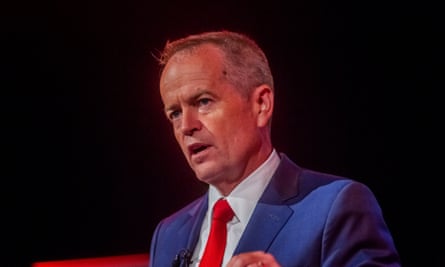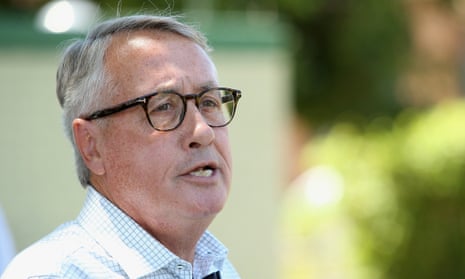The progressive left needs to “set the economic agenda and to ruthlessly organise to implement it” or risk being over-run by the populist right, which is in the ascendancy because of a global crisis in governance, according to the former Labor treasurer Wayne Swan.
Swan will use a speech to a Sydney conference on Saturday to warn centre left political parties against running “a tame and insipid economic agenda”, arguing if that’s the offering, they will be “run over by rightwing populists who use race and gender politics to camouflage a wealth concentration agenda”.
Swan’s public call comes as the ALP national left will caucus in Sydney in preparation for the party’s mid-year national conference, and renew calls for Labor to adopt a so-called “Buffett rule”, which would make high wealth individuals pay a minimum level of tax.
A position paper prepared by left faction convenors Andrew Giles and Pat Conroy, seen by Guardian Australia, declares that “attacking inequality, whether it be in income, wealth or physical access to jobs and the broader society must be the raison d’être of a Labor government”.
“Labor must examine alternate methods of raising revenue that attack speculation and inequality, such as, but not limited to, the Buffett tax and Tobin tax.”

The left’s decision to revive the internal conversation about the Buffett rule defies repeated attempts by the Labor leader Bill Shorten and the shadow treasurer Chris Bowen to shut down debate on the proposal.
The new left manifesto also calls for reform to “open up Labor’s structures”, including allowing rank and file party members to have a say in the selection of Senate candidates.
It argues Australia “is on the wrong path – we are headed towards a society in which there is an unbridgeable gulf between haves and have-nots” and it warns the ALP “cannot be half-hearted in our opposition to neoliberal austerity”.
“Inequality is close to, if not at, record highs. Wages are stagnating while corporate profits are booming. Families are being drowned by the pressure of insecure workplaces with the rise of casualisation and mass underemployment.”
Conroy says: “With the growing dissatisfaction with Australian politics and the state of the economy, Labor has a great opportunity to radically shift the economic debate, but we have to be bold and, above all, progressive”.
“We have to deliver for working people – anything less would be a betrayal of our historic mission.”
As the left deliberates, Swan, a Queensland rightwinger, will take up similar points at a weekend conference focussing on economic and social inequality.
The gathering will feature speakers from the US and the UK including Neera Tanden, the president of the Centre for American Progress, Harriet Harman, the former deputy leader of UK Labour, and Tom McMahon, former executive director of the Democratic National Committee.
The former Labor treasurer will argue the election of Donald Trump in the United States may not be “a temporary blip or even a wake-up call – without an adequate alternative agenda, his election might mark the beginning of a long-term rightwing supremacy”.
Swan will argue Australia’s record of mixing strong economic growth with social equity has contained the rise of reactionary and populist political figures – so buttressing that tradition is vitally important.
“The difference between Australia having a Hanson in the Senate and the United States having a Trump in the White House is as simple as the difference between the US having 30 years of wage stagnation and Australia having 30 years of wage growth,” he will say.
